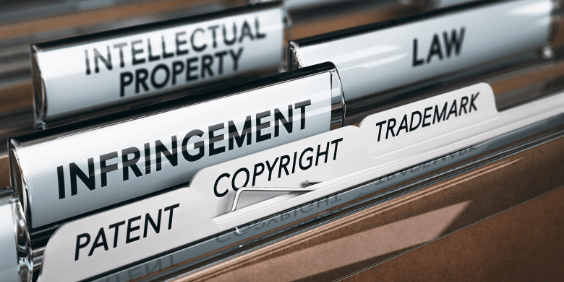Does Your Organization Need a Patent?

Authors: Scott Davidson, Gregory Forrest, Adam Lakusta
For organizations that are short on capital, deciding to invest in patents can be pivotal.
Securing a patent can fundamentally alter the trajectory of a business and help you get a foothold in competitive marketplaces. Before making the decision to invest in patents, it is important to consider whether your technology and/or business would benefit from patent protection.
1. What Is a Patent?
Patents, like copyright, trademarks and industrial designs, are a form of intellectual property. Specifically, patents are time-limited monopolies granted by the government in exchange for disclosing an invention. The typical duration of a patent is 20 years from the filing date. For an invention to be eligible for a patent, it must be:
- novel;
- non-obvious; and
- have utility.
Each of these terms has a common meaning, but they have specific meanings in the field of patent law.
a. Novelty
For an invention to be considered novel, no document can disclose your invention prior to the invention’s filing date. As such, despite filing a patent application with the Canadian Intellectual Property Office, patent examiners perform a worldwide search for documents that disclose inventions. Their search can be broad and is not confined to the patent offices of other countries.
b. Obviousness
Obviousness differs from novelty in that patent examiners may combine multiple documents that collectively render inventions obvious. What is considered obvious differs from person to person, but the benchmark used by patent examiners is “a person skilled in the art in light of their common general knowledge and the state of the art as a whole.” In other words, patent examiners ask whether a person of average intelligence who is skilled in the subject area of an invention would find the invention obvious in light of the state of the subject area as a whole. Given its broad interpretation, obviousness is understandably a common objection raised by examiners and can be difficult to overcome.
c. Utility
By contrast, the utility hurdle that inventions must overcome is much less onerous. The question raised by patent examiners with respect to utility can be put simply: Is the invention functional and operative? Inventions must serve as inventive solutions to practical problems and be capable of an actual relevant use.
2. What Is Patentable?
Any “invention” is patentable, but what constitutes an invention? Patentable inventions can be any new technology, process or software. Additionally, improvements to inventions – including improvements to patented inventions – are also patentable. Examples of patentable inventions include the following Canadian inventions: the pacemaker, a process for extracting insulin, the lightbulb, the Canadarm®, and numerous inventions relating to “deep learning” artificial intelligence.
a. Identifying Inventions
Many organizations, particularly startups, are often built around new technologies. However, it is important to ask whether that technology is truly an invention. Indications that you have created an invention are:
- if you or your business encountered a problem that required significant time and resources to solve;
- the solution you chose was unique in the industry;
- if you have not seen or heard of the technology before; and
- if your technology constitutes a significant improvement over similar technologies in the industry.
Once you have concluded that you have created an invention, if you decide to seek patent protection, it is important that you proceed to filing a patent application quickly. Most jurisdictions, including Canada, are first-to-file jurisdictions. This means that the date of filing is what gives your invention priority over others. As such, if a competitor filed a patent application after your filing disclosing a similar invention, they would likely be unsuccessful in securing a patent without including an inventive step.
3. What Information Do Patent Agents Require?
To begin work on securing patent protection, organizations applying for a patent will want to provide patent attorneys and/or patent agents with documents such as:
- drawings of the invention;
- flowcharts showing how the invention works; and
- a detailed description of the invention.
To begin with, you should present a high-level diagram to provide the patent agent (and later, the patent examiner) with some context on the area in which the invention will be used. A good place to start is explaining how the invention is used, its benefits and how it differs from other inventions in the field.
To effectively secure patent protection, patent agents require a detailed description of the invention. Once a patent application is filed, the description of an invention is, for all intents and purposes, unchangeable. The description of an invention cannot be substantively altered once it has been filed.
Filing a detailed description is important for patent prosecution. During patent prosecution, patent examiners and patent agents often argue about the scope of inventions. In patents, the scope of inventions is defined by elements referred to as the “claims.” When an application is originally filed, patent agents generally draft the claims of an invention very broadly. Patent examiners may object to these claims on the basis that they are too broad and therefore not patentable. Providing a comprehensive description of the invention in the detailed description allows patent agents to incorporate these details into the claims in order to increase the likelihood of securing patent protection.
Patents as Assets
Patent protection allows companies to leverage a unique product to get ahead of their competitors. Obtaining patent protection is therefore a highly desirable business asset. In fact, a 2020 study reported that intellectual property makes up 90% of the value of companies on the S&P 500® index. The vital importance patents can have for businesses, especially at the startup stage, is difficult to overstate.
Additionally, patents can act as deterrents to large companies that become interested in a smaller organization’s technology and the markets the technology generates. Patent protection can provide crucial leverage to smaller businesses by preventing large companies from entering the market and producing a similar product. This added leverage may result in a smaller business being bought by the larger company, engaging in a licensing agreement with the larger company, or selling the patent portfolio to the larger company.
Depending on the invention, acquiring patent protection can produce major commercial gains for small businesses.
Conclusion
Deciding whether to pursue patent protection is a major decision for any business. Securing a patent can fundamentally alter the trajectory of a business. However, because obtaining a patent can be a long and expensive process, the decision should not to be made lightly. It is important to consider whether your technology is, in fact, an invention and whether, if patented, it will be marketable. If you believe that you have created a marketable invention and would like to obtain patent protection, it is important that you consult with a patent agent as soon as possible to begin the patenting process.
Please contact our patents and industrial designs team or see our blog series focused on intellectual property if you’re interested in learning more.
Note: This article is of a general nature only and is not exhaustive of all possible legal rights or remedies. In addition, laws may change over time and should be interpreted only in the context of particular circumstances such that these materials are not intended to be relied upon or taken as legal advice or opinion. Readers should consult a legal professional for specific advice in any particular situation.



